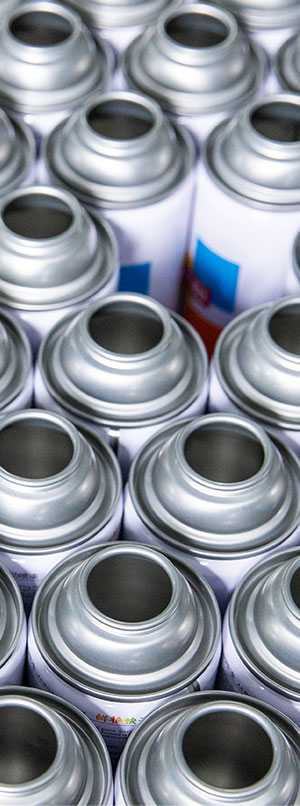Silicone RTV adhesive is a versatile bonding and gasketing material used in everything from automotive repair to home waterproofing. Yet, the most pressing question for many users after application is: “How long will it take to dry?”
The answer is not a simple number. The drying and full curing of RTV silicone gasket sealant is a complex process influenced by several factors. Understanding these dynamics is crucial for ensuring a successful application.

Clarification of Core Concepts: Drying vs. Curing
1. Surface Dry / Tack-Free Dry
A thin skin forms on the surface that is no longer sticky to the touch. At this stage, the adhesive body remains soft, and the interior is still liquid. (It can be touched but must not bear any pressure.)
Tack-free time typically ranges from a few minutes up to 2 hours.
2. Curing / Full Cure
The adhesive reacts thoroughly with moisture in the air from the outside in, transforming into an elastic solid. (It can withstand the intended load.)
Most silicone RTV adhesive require a minimum of 24 hours or longer for a full cure. Under conditions of low temperature, low humidity, or thick application, this time can extend to 48 hours or even a week.
Metaphor: It’s like a brownie, whose the surface may appear dry and form a crust, but the inside is still soft and moist. The same applies to RTV adhesive.
Key Factors Influencing RTV Adhesive Curing Speed
As moisture-curing polymers, Silicone RTV adhesive relies on atmospheric humidity to initiate cross-linking. The curing speed is primarily governed by these four factors:
1. Humidity
Optimal relative humidity typically falls between 40% and 70%. Low humidity drastically slows the curing reaction, while excessively high levels may cause rapid surface skin formation, potentially trapping uncured material beneath.
2. Temperature
Cure time approximately doubles with every 10°C drop in ambient temperature. The ideal temperature range for application and curing is 20°C to 25°C.
3. Thickness
Moisture penetration dictates that curing progresses from the surface inward. Thicker beads (e.g., >3mm) require exponentially longer full-cure times.
4. Ventilation
The curing process releases byproducts (such as acetic acid or alcohol). Good airflow helps to carry away these byproducts and introduce fresh moisture, thereby speeding up the cure.
5. Type of Silicone RTV Adhesive
- Acidic (Acetic Type): The most common type, with a pungent vinegar-like odor. Cures relatively quickly and is suitable for most general applications. However, it is corrosive to metals and should not be used on electronic components.
- Neutral (Alcohol Type/Oxime Type): Odorless or with a slight smell. Cures more slowly, is non-corrosive, and suitable for delicate applications such as electronics, stone, and metals.
How to Determine if RTV Adhesive Is Fully Cured?
1. Observe whether the bead of adhesive has a uniform color and a smooth, elastic surface.
2. Gently press the edge with your finger to check if it feels firm and elastic both inside and out, rather than hard on the surface and soft inside.
3. If a distinct vinegar-like smell is still detectable, it indicates that the curing process is still ongoing.
Precautions for Silicone RTV Adhesive
Do’s (to accelerate curing)
- (1) Lightly mist the application surface with water (to increase humidity).
- (2) Keep the working environment warm and well-ventilated.
- (3) Use a heat lamp or heater to indirectly raise the ambient temperature (avoid direct exposure and overheating).
Don’ts (may lead to failure)
- (1) Do not use a heat gun or open flame to blow directly on the adhesive! (This can cause surface charring, bubbling, and prevent internal curing).
- (2) Do not apply pressure or conduct tests on the adhesive before it is fully cured.
Recommended Waiting Times for Common Applications
- Automotive (valve cover gaskets, oil pans): Wait at least 12–24 hours before adding oil, and ideally 24 hours before starting the engine.
- Aquariums: Must wait until fully cured (at least 24–48 hours), then perform a leak test to ensure safety before adding fish and water.
- Kitchen and Bathroom Waterproof Sealing (sinks, bathtubs): Wait 24 hours for full curing before using with water.
- Electronic Sealing: Use neutral-cure adhesive and ensure full curing (24 hours) to guarantee insulation performance.
Conclusion
While silicone RTV adhesive may become tack-free in hours, , achieving their full structural strength and a reliable seal requires at least 24 hours. Therefore, patience isn’t just a virtue, it’s a critical component of a successful application.
For results that match this level of care, trust SANVO. Our high-performance RTV products are specifically formulated to deliver on their promises, with features like fast skin-over time, excellent oil resistance, and enduring protection against weathering and aging.
